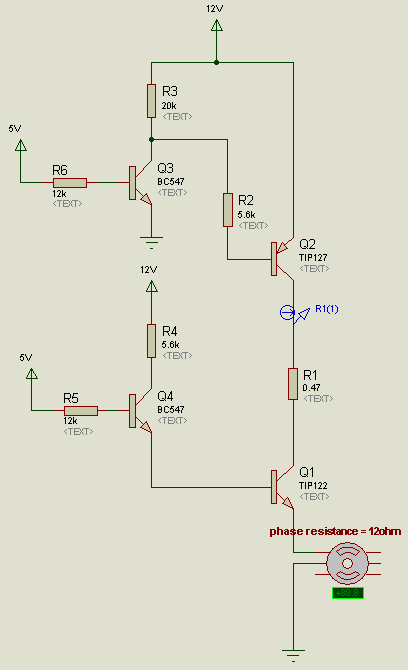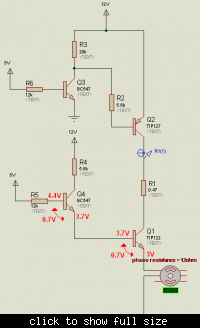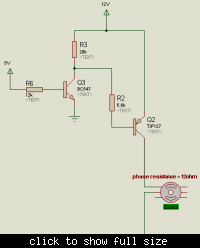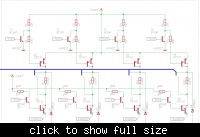elPresidente
Junior Member level 2
Hallo, I'm trying to make switching power supply to my stepper motor. Thought that this circuit will be good but it doesn't work properly - I mean as i think it should work - transistors got some kind of oscillations and load (stepper motor) current is only about 0.25 A and i would expect it to be equal to ohm law I = U/R = 0.96 A.
When Stepper motor phase is connected after 0.47 ohm resistor, between transistors it works fine but i have to do it in shown order.
Could anyone explain me why it doesn't work? Which property of transistors make it so?

When Stepper motor phase is connected after 0.47 ohm resistor, between transistors it works fine but i have to do it in shown order.
Could anyone explain me why it doesn't work? Which property of transistors make it so?





